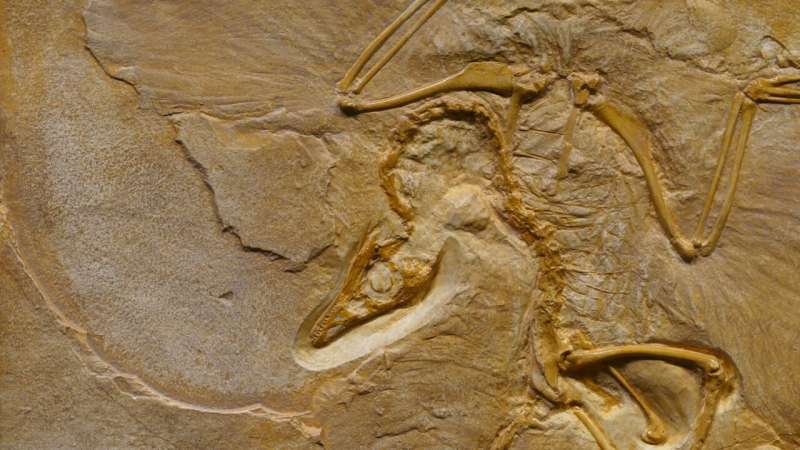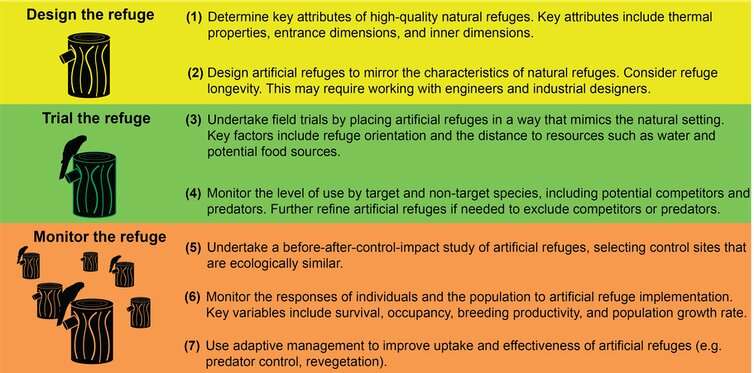Artificial refuges for wildlife are a popular stopgap for habitat destruction, but more research is needed

Wildlife worldwide is facing a housing crisis. When land is cleared for agriculture, mining, and urbanization, habitats and natural refuges go with it, such as , and .
The ideal solution is to tackle the that cause habitat loss. But some refuges take hundreds of years to recover once destroyed, and some without help. Tree hollows, for example, can take to develop.
As a result, conservationists have increasingly looked to human-made solutions as a stopgap. That's where artificial refuges come in.
If the goal of artificial refuges is to replace lost or degraded habitat, then it is important we have a good understanding of how well they perform. reviewed artificial refuges worldwide—and we found the science underpinning them is often not up to scratch.
What are artificial refuges?
Artificial refuges provide wildlife places to shelter, breed, hibernate, or nest, helping them survive in disturbed environments, whether degraded forests, deserts or urban and agricultural landscapes.
You're probably already familiar with some. Nest boxes for birds and mammals are one example found in many urban and rural areas. They provide a substitute for tree hollows when land is cleared.
Other examples include used in Norway to provide places for newts to hibernate in urban and agricultural environments, and used in the U.S. to allow bats to roost in the absence of trees. And in France, provide refuge for lizards in lieu of their favored rabbit burrows.

But do we know if they work?
Artificial refuges can be highly effective. In central Europe, for example, allowed isolated populations of a colorful bird, the hoopoe, to reconnect—boosting the local genetic diversity.
Still, they are far from a sure thing, having at times of their promise to provide suitable homes for wildlife.
from Catalonia found 42 soprano pipistrelles (a type of bat) had died from dehydration within wooden bat boxes, due to a lack of ventilation and high sun exposure.
from Australia found artificial burrows for the endangered pygmy blue tongue lizard had a design flaw that forced lizards to enter backwards. This increased their risk of predation from snakes and birds.
And the video below from Czech conservation project shows a pine marten (a forest-dwelling mammal) and tree sparrow infiltrating next boxes to steal the eggs of Tengmalm's owls and common starlings.

So why is this happening?
investigated the state of the science regarding artificial refuges worldwide.
We looked at more than 220 studies, and we found they often lacked the rigor to justify their widespread use as a conservation tool. Important factors were often overlooked, such as how temperatures inside artifical refuges compare to natural refuges, and the local abundance of food or predators.
Alarmingly, just under 40% of studies compared artificial refuges to a control, making it impossible to determine the impacts artificial refuges have on the target species, positive or negative.
This is a big problem, because artificial refuges are increasingly incorporated into programs that seek to "offset" . involves protecting or creating habitat to compensate for ecological harm caused by land clearing from, for instance, mining or urbanization.

For example, one project in Australia relied heavily on nest boxes to offset the loss of old, hollow-bearing trees.
But a scientific review of the project showed it to be a failure, due to low rates of uptake by target species (such as the superb parrot) and the rapid deterioration of the nest boxes from falling trees.
The future of artificial refuges
There is little doubt artificial refuges will continue to play a role in confronting Earth's biodiversity crisis, but their limitations need to be recognized, and the science underpinning them must improve. Our points out areas of improvement that spans design, implementation, and monitoring, so take a look if you're involved in these sorts of projects.
We also urge for more partnerships between . This is because interdisciplinary collaboration brings together different ways of thinking and helps to shed new light on complex problems.
It's clear improving the science around artificial refuges is well worth the investment, as they can give struggling wildlife worldwide a fighting chance against further habitat destruction and climate change.
Provided by The Conversation
This article is republished from under a Creative Commons license. Read the .![]()





















